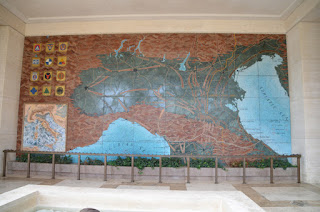When a person sits down to play a video game, they do it as an escape. They are trying to get away from the stress of the day or week and go on an adventure without spending money, gas or time getting there. Sure, a game might cost $60, but that is far less than what it would be to drive to Yosemite for the weekend. Not to mention, a person can’t fight a dragon at Yosemite nor can a person fly a ship into space with their spare time. Video games offer a special escape for millions of gamers everyday.
Miller (2011) refers to the current generation of video games as having a combination of telepresence and sensory depth. In my experience, the sensory depth is only limited by smell and taste in the current generation of games. Visual and audible stimuli have reached amazing fidelity and only have so much more room to grow. Even touch has been taken care of with vibrating controllers, although in the future, we may have more detailed touch feedback devices.

My wife once called a tech support line that was based in India. Her brief interaction with the representative on the other end of the line was a perfect example of presence. While on the line, a train went by our apartment and the man in India asked what that was. My wife told him and he was so excited to be hearing a train in America while in his cubicle in India. In that moment, the representative in India was transported in his mind into our apartment. He was there with us, if only briefly, through his own imagination with a single sound.
In video games, sound wasn’t always as important as it is today. Sounds used to be simple beeps and pongs. Now, there are foley artists at every game studio who spend hours compiling sound effects, music and menu sounds for video games. The Assassins Creed series is a prime example of high end sound at work. Gamers play an assassin in an ancient world. The player can walk down a street in Venice, hear a man selling fruit, birds chirping, women singing, water bubbling, the list is endless. This rich environment is enhanced with sound, adding to the presence with detail never before imagined in gaming. Visually, you still may feel like you are playing a game at times, but audibly you can be whisked away into another place in another time.

Video games are not the only arena to utilize presence in this way. Thompson (2012) writes about a boy who attends school via robot. He sits at home and virtually goes to his classes due to an extreme reaction to allergies, he is experiencing presence at school in this way. In another case, Thompson (2012) refers to the use of remote arms in surgery where a doctor in New York removed the gall bladder of a woman in France, over 6,000 miles away.
The U.S. military has been using drones in the war against terrorism since 2002. Pilots in an air force base in Nevada are able to fly a small craft carrying weapons in Afghanistan. These can be used to attack targets on the ground. This effectively removes the danger of flying a mission from the mind of the pilot. It may also remove the remorse felt that usually comes with taking another person’s life. Grossman (2013) found that the U.S. military had carried out 447 drone attacks in Afghanistan in the first few months of 2012. It resembles a toy or pet and in many ways, a video game. This could even be tied to video game violence.

In a study by Nowak, Krdmar & Farrar (2008) 227 subjects were randomly assigned to play both violent and nonviolent video games. The study found that the higher level of presence was tied to the frequency of playing video games. Also, males were less subject to presence than female gamers. The study also found that the more violent the video game was, the more presence there was felt by the participant. This increase in presence also caused an increase in hostility when playing violent games. Subjects became more verbally aggressive than those that experiences less presence.
As an avid gamer, this researcher doesn’t see himself as a violent person. But, this researcher also doesn’t play as many violent games as the younger gaming population of today might. this researcher uses gaming as a way to relax and get away from life for a while. If it’s a violent game to the extent that I’m repulsed, this researcher doesn’t play it. this researcher prefers a game with greater presence, to draw him in and take him to another world for a while. Ultimately, this researcher thinks that is what video games should be about, the experience. Presence is a huge tool in the gaming industry. For games like Grand Theft Auto, Mass Effect, Assassins Creed, Uncharted and more, presence is the most important reason people are playing those games. They are more than a game. They are a story, a story that if told without the detailed level of sensory depth, just wouldn’t be as much fun.

REFERENCES
Grossman, L. (2013). Drone Home. Time 181(5), pp. 26-33.
Thompson, H. (2012). Here, there, virtually anywhere. New Scientist. 216(2890), pp. 38-41.
Miller, V. (2011). Understanding Digital Culture. pp. 31-32. London: SAGE Publications, LTD.
Nowak, K; Krcmar, M; Farrar, K. (2008). The Causes and Consequences of Presence: Considering the Influence of
Violent Video Games on Presence and Aggression. Presence: Teleoperators and Virtual Environments. 17(3). pp 256-268.












































